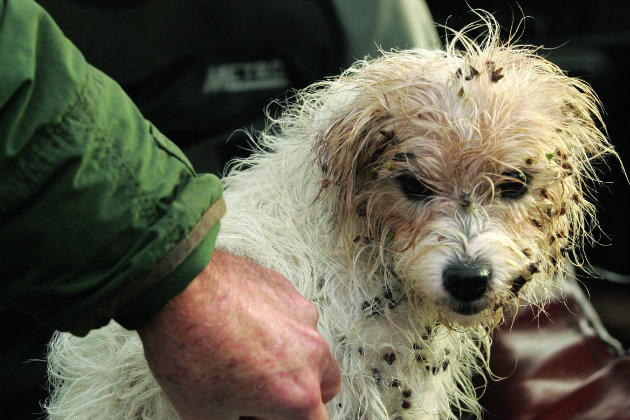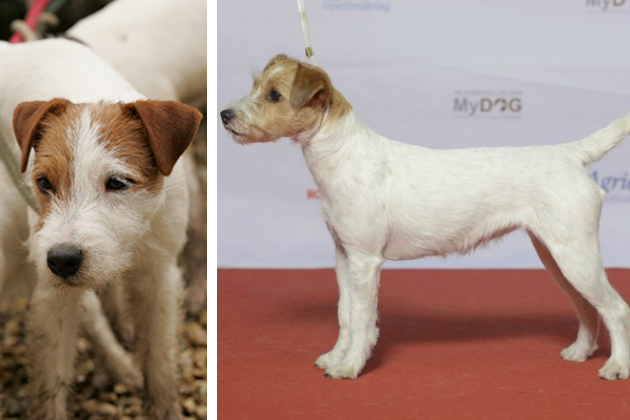Brave terriers – the kings of the earth
Is their name derived from the Latin 'terra' meaning ground? Or their ability to strike terror into their quarry?

Terriers give a new perspective to dog ownership
Terriers are a particularly British dog. There are of course, many different types of terrier but in fieldsports they are essentially earth dogs, whose task is to go to ground after vermin, either to flush or to kill it.
The bravery of terriers
True earth dogs need to be small enough to get to ground without being so small that they risk being dominated by their quarry. Today in England this work is restricted by law to the fox, but in many other countries terriers are expected to tackle a wider variety of vermin, such as otters, badgers, groundhogs and possums. Facing down a large well-armed creature in the dark on its own, week-in week-out, takes a particular character of dog.

Terriers are hardwired to hunt below ground
Terriers need courage that spurs them on to do their job no matter what.
This can however be a demanding attribute to manage when the dog is not at work.
Terriers don’t
- Quit
- Retreat
- Shut up
They only let go to get a better hold. They are bred to take the fight to the enemy and win it.

The Patterdale/ fell terrier
Fighting form
Physically, terriers need a spannable ribcage so that they can work their way through the fox-narrow tunnels underground. They need big forepaws to dig with, and strong back-ends to hold them firm when under attack, or to push them on through the pipes in pursuit. Their tails are traditionally two-thirds docked to avoid injury when wagging frantically against the sides and roof of the earth, leaving sufficient length for their handlers to grip if they need to draw their dog out after having dug down to it. The terrier should bay, for hours if necessary, to guide the digging process (though of course this is made easier nowadays by electronic locators). That’s why many types of terrier are so vocal.
The head of the terrier needs to be strong, the jaw powerful, and the brows heavy to protect the eyes from dirt and bites. The teeth should be big and well-rooted, though most working terriers lose their incisors early. The whole beast should hold the ground like a prizefighter.

Working terriers to ground is legal in order to control foxes for the protection of gamebirds. If you have a fox that won’t flush, terriers could be a solution
Types of terrier
King of the earth dogs include the Patterdale, Fell and Lakeland terriers.
Lakeland terriers have slightly longer legs because their traditional work includes finding quarry in vast outcrops of stone, where they need to climb and scramble, and maybe to tackle a fox on a ledge above them. If the quarry bolts, and it would be wise to, that is one job done, but these are hard terriers by breeding, and can, if necessary, kill a fox that will not bolt.
Lakelands can be dual-purpose, in that they make affable pets as long as they have plenty of work, but the Patterdale and Fell types are like psychopaths, and it is unwise even to kennel them together. They live to work, and many consider them the supreme earth dogs.

Quite a few owners of well-trained gun dogs have a terrier tucked away somewhere
Other terriers have a more biddable nature. Among these are Border and Jack Russell types, usually almost as happy to be part of the family as they are to work. Not all of these breeds make good earth dogs, but they certainly enjoy the concept, and find holes in the ground appealing. The Plummer terrier was created specifically for ratting in packs, and many will work to ground as well, but they can be combative with other dogs and are not for novices.
The enigmatic Bedlington terrier is one of the bravest terriers. It has a totally different attitude from those mentioned earlier and doesn’t go looking for trouble, though it can end it if it comes across it. Traditionally the Bedlington is a silent worker, though possessed of a deep bay quite at odds with its size. Some say it comes from otterhound blood long ago, and certainly Bedlingtons have tremendous scenting powers. Though suitably narrow, height has always been an issue with the Bedlington, many maturing above the size desirable for an earth dog. Some owners cross them with other breeds in an attempt to widen the gene pool and keep a small type going. Others happily accept the larger version, which is still a great vermin dog even if it doesn’t fit down holes.

Sealyham terriers
Other larger terriers
Larger types of terrier have traditionally featured as farm and vermin dogs. Into this group come the Irish terrier, Kerry blue and soft-coated Wheaten, each of which, like the Bedlington, has a darker side to its history because they have been used as fighting dogs, too. There are small pockets of working types within the Skye, Sealyham, Aberdeen, West Highland, Cairn and Dandy Dinmont breeds, though most are only seen in shows and as pets now. In most of these, the instinct to work is still there, even if the size is too large or too small, the coat too profuse or the proportions incorrect.
Ratting with terriers
I’ve been to a meet or two in my time: beagle packs on village greens; minkhounds on crumbling stone bridges…
Terrier breeds: are they born anarchists?
Most, if not all of the terrier breeds bring a smile to our faces, whether the smug condescension of the…
How to spot the difference between a Jack Russell terrier and a Parson Russell
The most striking difference between a Jack Russell terrier and a Parson Russell terrier is their size. Jack Russells are…
The Yorkshire terrier, traditionally a rat-pit dog, retains its terrier spirit, but nowadays often lacks the jaw or dentition to do that job, though the diminutive Norfolk and Norwich terriers can still give a rat a run for its money. Other ratting terriers include the Manchester and the English toy terrier, each of which has the lithe physique of the ratter, though are seldom worked nowadays. More recent creations, the Lucas and sporting Lucas, are Sealyham-based, and display similar physique and working attributes.











